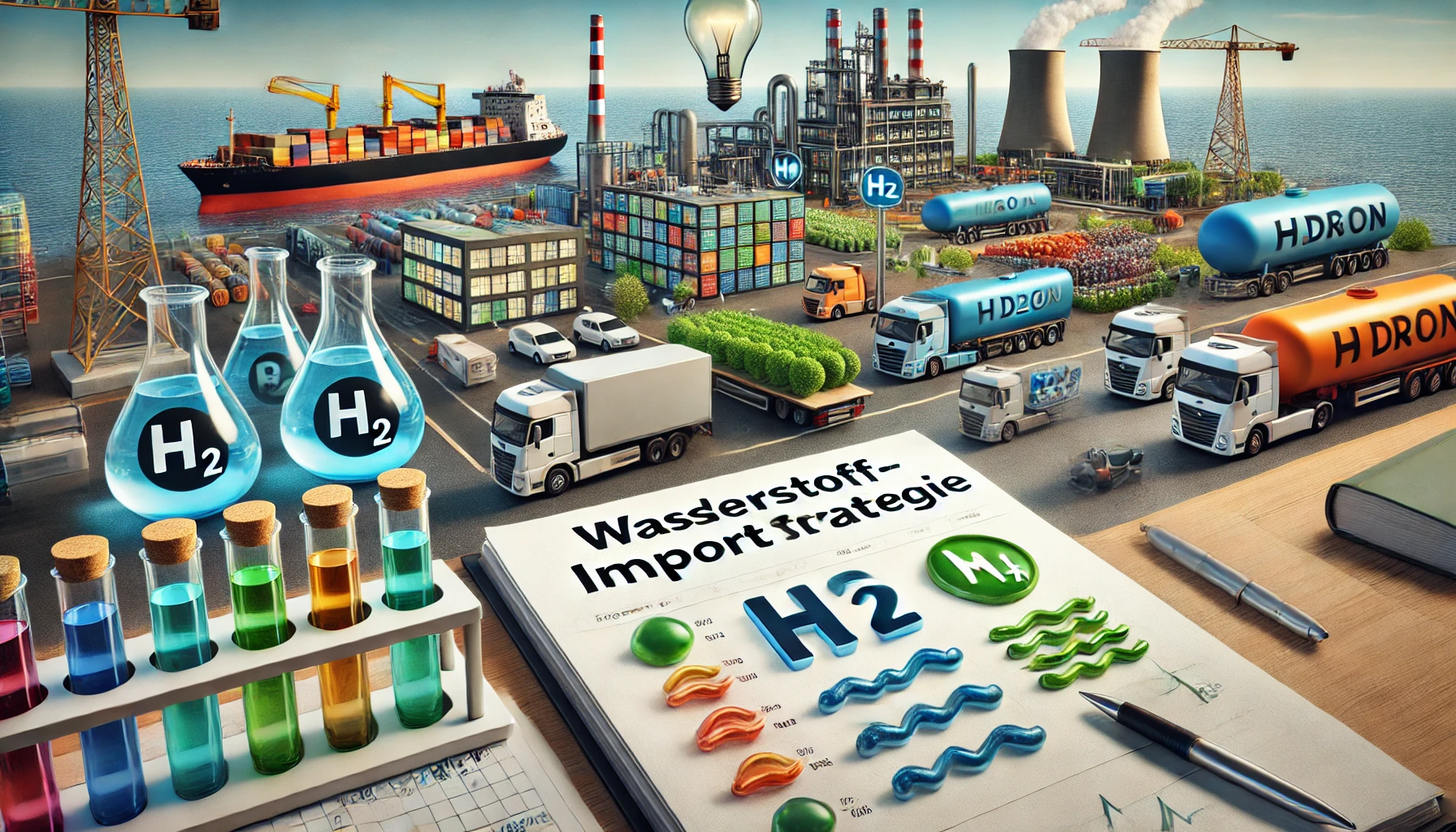Hydrogen import strategy - market ramp-up and import requirements
On 24 July 2024, the German government agreed on the import strategy for hydrogen and hydrogen derivatives
We are taking the publication of the hydrogen import strategy as an opportunity to highlight the import strategy, current challenges in the transport of hydrogen, the expected origin of hydrogen imports and, finally, the recently published innovations from the TransHyDE research and development program in a four-part series of articles.
This first article deals with the expected increase in hydrogen import demand, as well as the financial and regulatory incentives which the German government introduced to achieve the ramp-up of the hydrogen market.
The hydrogen import strategy
In the hydrogen import strategy developed under the leadership of the BMWK, which is based on the update of the National Hydrogen Strategy 2023 (NWS 23), the Federal Government explains how the forecasted import demand can be covered. The aim of the hydrogen import strategy is to ensure a resilient supply of green hydrogen and its derivatives (see here for the colour theory). The desired resilient hydrogen supply should be stable, secure, diversified and sustainable.
Sharp increase in hydrogen demand expected
The German government expects a sharp increase in the import demand for hydrogen and hydrogen derivatives: A demand of 95-130 TWh of hydrogen including hydrogen derivatives is expected by 2030. The estimated import share is 45 - 90 TWh - i.e. 50 - 70 %. The German government is also planning to add 10 GW of electrolysis capacity nationally. The German government assumes that this demand will increase further to 360-500 TWh for hydrogen and a further 200 TWh for hydrogen derivatives by 2045.
The expected demand is currently still based on very uncertain forecasts, but is expected to arise primarily in the following sectors:
- Steel industry
- Production of chemical base materials
- petrochemicals
- Mobility and logistics
- Power plant sector
- Heat generation
Market ramp-up: strengthening supply and demand
The EU and the German government are taking various political, legal and economic measures to promote a rapid market ramp-up of the hydrogen market.
On one hand, the demand for hydrogen on the German market is to be strengthened through financial incentives and practicable and reliable framework conditions, and at the same time the supply of hydrogen on the international market is to be expanded.
On the other hand, sufficient low-cost hydrogen should be available on the supply side in Germany, for which the Federal Government plans to “use the full range of foreign trade instruments”.
1. Financial Support
The financial support instruments intended to increase supply and demand include:
- the already expanded H2Global program (we reported); H2Global is intended to create security of supply and promote the linking of international supply with demand in Germany;
- the Climate Protection Contracts funding program, with which the German government supports industrial companies in setting up and operating climate-friendly production facilities;
- the Federal Funding for Industry and Climate Protection (BIK), which has been promoting investments in decarbonization, particularly in small and medium-sized enterprises, since April of this year until 2030;
- the EU Innovation Fund, through which the EU promotes hydrogen production via auctions of the European Hydrogen Bank (details here);
- increased funds for green hydrogen at the European Investment Bank;
- the PtX Development Fund and further cooperation between the public and private sectors; and
- the promotion of hydrogen projects from the four IPCEI waves (Hy2Tech, Hy2use, Hy2Infra and Hy2Move), which are intended to promote the hydrogen ramp-up in Europe along the entire value chain.
The Federal Government is also promoting research and development in the field of hydrogen technology, striving to establish a hydrogen filling station network and initiating the procurement of hydrogen vehicles. In particular, the BMDV supports the hydrogen refuelling infrastructure via the National Innovation Programme for Hydrogen and Fuel Cell Technology (NIP).
2. Legal Developments
The EU in particular has created regulatory incentives, not only by adapting the EU Emissions Trading System, but also through the RED III Directive and its implementation, as well as the ReFuelEU Aviation and ReFuelEU Maritime initiatives (we reported). In addition, the carbon border adjustment mechanism (CBAM) protects the price expectations of European producers of green hydrogen from cheaper, grey hydrogen imports.
The agreement on a power plant safety law in July, which has already been coordinated with the European Commission, is also intended to drive forward the decarbonization of power plants. This Power Plant Security Act is intended to create the framework conditions for the tendering of new power plant capacities and long-term storage facilities. The gas-fired power plants to be put out to tender on this basis should be H2-ready.
Conclusion
The agreement on a hydrogen import strategy is a major step in the development of the German hydrogen market, which is being driven by the industry's need and willingness to transform and EU legal developments, among other things.
Despite the wide range of national opportunities that the German government is creating to enable and drive forward the ramp-up of the hydrogen market, there are still unresolved issues and challenges - particularly regarding the origin of the hydrogen. As part of the hydrogen import strategy, the focus will be on sourcing hydrogen from other countries. In our next article in the series, we will therefore look at the likely origin of hydrogen imports.
The EU/COMP team at Chatham Partners specializes in complex issues and procedures in connection with hydrogen projects and is happy to advise you on their planning and implementation, in particular in connection with procurement and planning procedures as well as funding opportunities.
We would like to thank Flora Bantelmann and Louica Unger for their valuable support in the preparation of this article.


